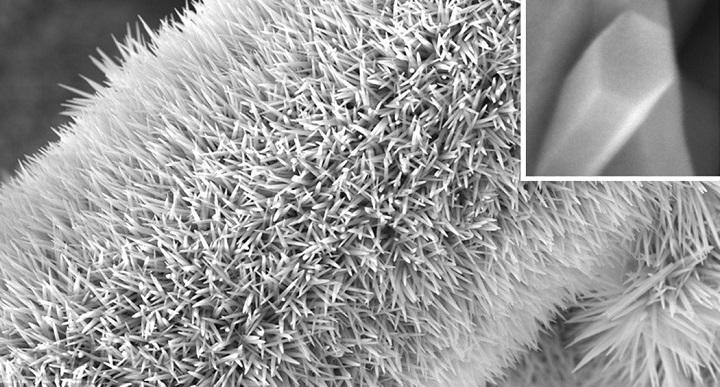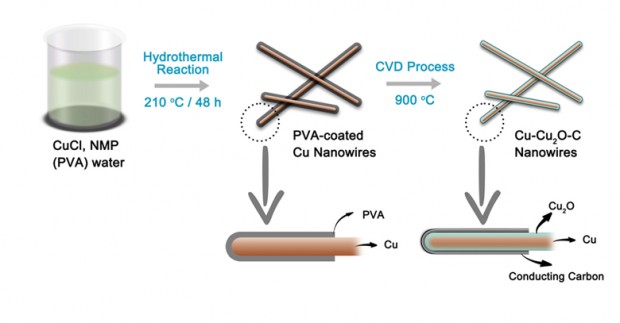Breakout Labs
I last wrote about entrepreneur Peter Thiel’s Breakout Labs project in an Oct. 26, 2011 posting announcing its inception. An Oct. 6, 2015 Breakout Labs news release (received in my email) highlights a funding announcement for four startups of which at least three are nanotechnology-enabled,
Breakout Labs, a program of Peter Thiel’s philanthropic organization, the Thiel Foundation, announced today that four new companies advancing scientific discoveries in biomedical, chemical engineering, and nanotechnology have been selected for funding.
“We’re always hearing about bold new scientific research that promises to transform the world, but far too often the latest discoveries are left withering in a lab,” said Lindy Fishburne, Executive Director of Breakout Labs. “Our mission is to help a new type of scientist-entrepreneur navigate the startup ecosystem and build lasting companies that can make audacious scientific discoveries meaningful to everyday life. The four new companies joining the Breakout Labs portfolio – nanoGriptech, Maxterial, C2Sense, and CyteGen – embody that spirit and we’re excited to be working with them to help make their vision a reality.”
The future of adhesives: inspired by geckos
Inspired by the gecko’s ability to scuttle up walls and across ceilings due to their millions of micro/nano foot-hairs,nanoGriptech (http://nanogriptech.com/), based in Pittsburgh, Pa., is developing a new kind of microfiber adhesive material that is strong, lightweight, and reusable without requiring glues or producing harmful residues. Currently being tested by the U.S. military, NASA, and top global brands, nanoGriptech’s flagship product Setex™ is the first adhesive product of its kind that is not only strong and durable, but can also be manufactured at low cost, and at scale.
“We envision a future filled with no-leak biohazard enclosures, ergonomic and inexpensive car seats, extremely durable aerospace adhesives, comfortable prosthetic liners, high performance athletic wear, and widely available nanotechnology-enabled products manufactured less expensively — all thanks to the grippy little gecko,” said Roi Ben-Itzhak, CFO and VP of Business Development for nanoGriptech.
A sense of smell for the digital world
Despite the U.S. Department of Agriculture’s recent goals to drastically reduce food waste, most consumers don’t realize the global problem created by 1.3 billion metric tons of food wasted each year — clogging landfills and releasing unsustainable levels of methane gas into the atmosphere. Using technology developed at MIT’s Swager lab, Cambridge, Ma.-based C2Sense(http://www.c2sense.com/) is developing inexpensive, lightweight hand-held sensors based on carbon nanotubes which can detect fruit ripeness and meat, fish and poultry freshness. Smaller than a half of a business card, these sensors can be developed at very low cost, require very little power to operate, and can be easily integrated into most agricultural supply chains, including food storage packaging, to ensure that food is picked, stored, shipped, and sold at optimal freshness.
“Our mission is to bring a sense of smell to the digital world. With our technology, that package of steaks in your refrigerator will tell you when it’s about to go bad, recommend some recipe options and help build out your shopping list,” said Jan Schnorr, Chief Technology Officer of C2Sense.
Amazing metals that completely repel water
MaxterialTM, Inc. develops amazing materials that resist a variety of detrimental environmental effects through technology that emulates similar strategies found in nature, such as the self-cleaning lotus leaf and antifouling properties of crabs. By modifying the surface shape or texture of a metal, through a method that is very affordable and easy to introduce into the existing manufacturing process, Maxterial introduces a microlayer of air pockets that reduce contact surface area. The underlying material can be chemically the same as ever, retaining inherent properties like thermal and electrical conductivity. But through Maxterial’s technology, the metallic surface also becomes inherently water repellant. This property introduces the superhydrophobic maxterial as a potential solution to a myriad of problems, such as corrosion, biofouling, and ice formation. Maxterial is currently focused on developing durable hygienic and eco-friendly anti-corrosion coatings for metallic surfaces.
“Our process has the potential to create metallic objects that retain their amazing properties for the lifetime of the object – this isn’t an aftermarket coating that can wear or chip off,” said Mehdi Kargar, Co-founder and CEO of Maxterial, Inc. “We are working towards a day when shipping equipment can withstand harsh arctic environments, offshore structures can resist corrosion, and electronics can be fully submersible and continue working as good as new.”
New approaches to combat aging
CyteGen (http://cytegen.com/) wants to dramatically increase the human healthspan, tackle neurodegenerative diseases, and reverse age-related decline. What makes this possible now is new discovery tools backed by the dream team of interdisciplinary experts the company has assembled. CyteGen’s approach is unusually collaborative, tapping into the resources and expertise of world-renowned researchers across eight major universities to focus different strengths and perspectives to achieve the company’s goals. By approaching aging from a holistic, systematic point of view, rather than focusing solely on discrete definitions of disease, they have developed a new way to think about aging, and to develop treatments that can help people live longer, healthier lives.
“There is an assumption that aging necessarily brings the kind of physical and mental decline that results in Parkinson’s, Alzheimer’s, and other diseases. Evidence indicates otherwise, which is what spurred us to launch CyteGen,” said George Ugras, Co-Founder and President of CyteGen.
To date, Breakout Labs has invested in more than two dozen companies at the forefront of science, helping radical technologies get beyond common hurdles faced by early stage companies, and advance research and development to market much more quickly. Portfolio companies have raised more than six times the amount of capital invested in the program by the Thiel Foundation, and represent six Series A valuations ranging from $10 million to $60 million as well as one acquisition.
You can see the original Oct. 6, 2015 Breakout Labs news release here or in this Oct. 7, 2015 news item on Azonano.
Argonne National Labs and Nano Design Works (NDW) and the Argonne Collaborative Center for Energy Storage Science (ACCESS)
The US Department of Energy’s Argonne National Laboratory’s Oct. 6, 2015 press release by Greg Cunningham announced two initiatives meant to speed commercialization of nanotechnology-enabled products for the energy storage and other sectors,
Few technologies hold more potential to positively transform our society than energy storage and nanotechnology. Advances in energy storage research will revolutionize the way the world generates and stores energy, democratizing the delivery of electricity. Grid-level storage can help reduce carbon emissions through the increased adoption of renewable energy and use of electric vehicles while helping bring electricity to developing parts of the world. Nanotechnology has already transformed the electronics industry and is bringing a new set of powerful tools and materials to developers who are changing everything from the way energy is generated, stored and transported to how medicines are delivered and the way chemicals are produced through novel catalytic nanomaterials.
Recognizing the power of these technologies and seeking to accelerate their impact, the U.S. Department of Energy’s Argonne National Laboratory has created two new collaborative centers that provide an innovative pathway for business and industry to access Argonne’s unparalleled scientific resources to address the nation’s energy and national security needs. These centers will help speed discoveries to market to ensure U.S. industry maintains a lead in this global technology race.
“This is an exciting time for us, because we believe this new approach to interacting with business can be a real game changer in two areas of research that are of great importance to Argonne and the world,” said Argonne Director Peter B. Littlewood. “We recognize that delivering to market our breakthrough science in energy storage and nanotechnology can help ensure our work brings the maximum benefit to society.”
Nano Design Works (NDW) and the Argonne Collaborative Center for Energy Storage Science (ACCESS) will provide central points of contact for companies — ranging from large industrial entities to smaller businesses and startups, as well as government agencies — to benefit from Argonne’s world-class expertise, scientific tools and facilities.
NDW and ACCESS represent a new way to collaborate at Argonne, providing a single point of contact for businesses to assemble tailored interdisciplinary teams to address their most challenging R&D questions. The centers will also provide a pathway to Argonne’s fundamental research that is poised for development into practical products. The chance to build on existing scientific discovery is a unique opportunity for businesses in the nano and energy storage fields.
The center directors, Andreas Roelofs of NDW and Jeff Chamberlain of ACCESS, have both created startups in their careers and understand the value that collaboration with a national laboratory can bring to a company trying to innovate in technologically challenging fields of science. While the new centers will work with all sizes of companies, a strong emphasis will be placed on helping small businesses and startups, which are drivers of job creation and receive a large portion of the risk capital in this country.
“For a startup like mine to have the ability to tap the resources of a place like Argonne would have been immensely helpful,” said Roelofs. “We”ve seen the power of that sort of access, and we want to make it available to the companies that need it to drive truly transformative technologies to market.”
Chamberlain said his experience as an energy storage researcher and entrepreneur led him to look for innovative approaches to leveraging the best aspects of private industry and public science. The national laboratory system has a long history of breakthrough science that has worked its way to market, but shortening that journey from basic research to product has become a growing point of emphasis for the national laboratories over the past couple of decades. The idea behind ACCESS and NDW is to make that collaboration even easier and more powerful.
“Where ACCESS and NDW will differ from the conventional approach is through creating an efficient way for a business to build a customized, multi-disciplinary team that can address anything from small technical questions to broad challenges that require massive resources,” Chamberlain said. “That might mean assembling a team with chemists, physicists, computer scientists, materials engineers, imaging experts, or mechanical and electrical engineers; the list goes on and on. It’s that ability to tap the full spectrum of cross-cutting expertise at Argonne that will really make the difference.”
Chamberlain is deeply familiar with the potential of energy storage as a transformational technology, having led the formation of Argonne’s Joint Center for Energy Storage Research (JCESR). The center’s years-long quest to discover technologies beyond lithium-ion batteries has solidified the laboratory’s reputation as one of the key global players in battery research. ACCESS will tap Argonne’s full battery expertise, which extends well beyond JCESR and is dedicated to fulfilling the promise of energy storage.
Energy storage research has profound implications for energy security and national security. Chamberlain points out that approximately 1.3 billion people across the globe do not have access to electricity, with another billion having only sporadic access. Energy storage, coupled with renewable generation like solar, could solve that problem and eliminate the need to build out massive power grids. Batteries also have the potential to create a more secure, stable grid for countries with existing power systems and help fight global climate disruption through adoption of renewable energy and electric vehicles.
…
Argonne researchers are pursuing hundreds of projects in nanoscience, but some of the more notable include research into targeted drugs that affect only cancerous cells; magnetic nanofibers that can be used to create more powerful and efficient electric motors and generators; and highly efficient water filtration systems that can dramatically reduce the energy requirements for desalination or cleanup of oil spills. Other researchers are working with nanoparticles that create a super-lubricated state and other very-low friction coatings.
“When you think that 30 percent of a car engine’s power is sacrificed to frictional loss, you start to get an idea of the potential of these technologies,” Roelofs said. “But it’s not just about the ideas already at Argonne that can be brought to market, it’s also about the challenges for businesses that need Argonne-level resources. I”m convinced there are many startups out there working on transformational ideas that can greatly benefit from the help of a place Argonne to bring those ideas to fruition. That is what has me excited about ACCESS and NDW.”
For more information on ACCESS, see: access.anl.gov
For more information on NDW, see: nanoworks.anl.gov
You can read more about the announcement in an Oct. 6, 2015 article by Greg Watry for R&D magazine featuring an interview with Andreas Roelofs.


